The history of St John’s Episcopal Church: Standing the test of time
St John’s Episcopal Church in Worthington, Ohio, was founded in 1804 by a band of settlers from Connecticut led by James Kilbourne, an Episcopal Deacon, business man, and later a colonel in the Ohio Militia. St John’s was the first Episcopal church West of the Alleghenies and the first church in the area – making St John’s the oldest Episcopal church West of the Alleghenies.
Table of Contents
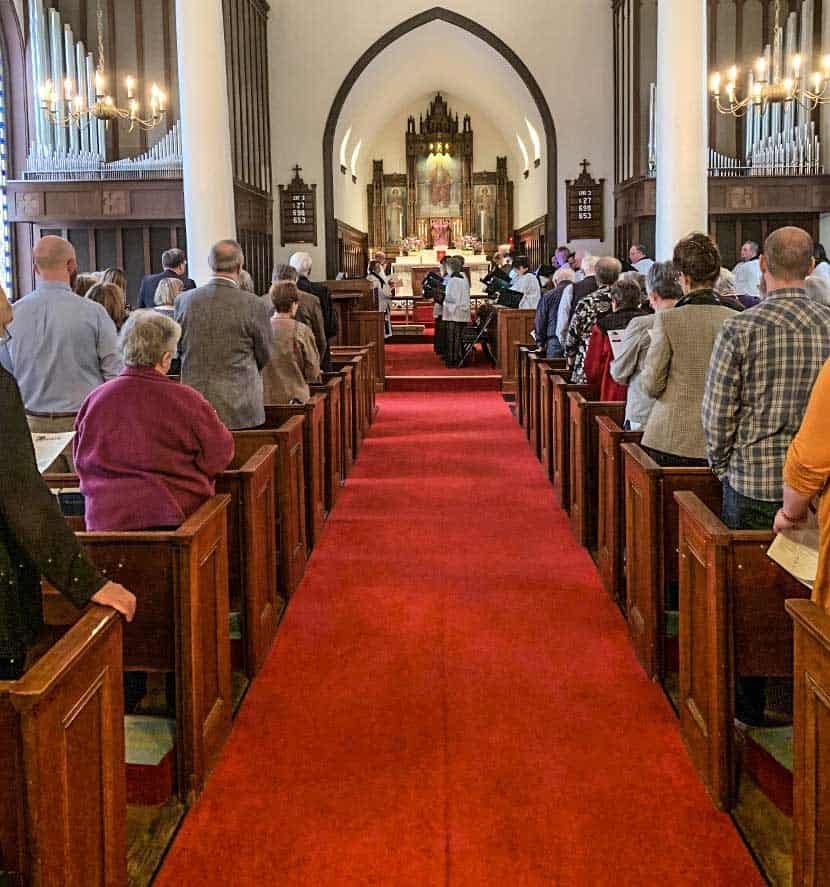
Story by Louis Huffman, church member
Photos courtesy of St John’s
The founding of St John’s Episcopal Church
When the settlers arrived from Connecticut, they unloaded their wagons and held a church service.
The settlers came prepared with what they would need to survive and function the moment they arrived in their new home. One of the items that was brought with them was a wooden altar made in Connecticut for their home.
This wooden altar, we later found, also doubled as a trunk to bring other needed items; there is a panel on the side of the altar that opens for storage.
Two wrought iron candle holders were among the items that were stowed away in the altar to bring to Worthington; the two candle holders are still owned by St. Johns.
As soon as they arrived in Worthington they unpacked and held a Church service using the items they brought with them. Ohio churches were an important part of the pioneer’s lives.
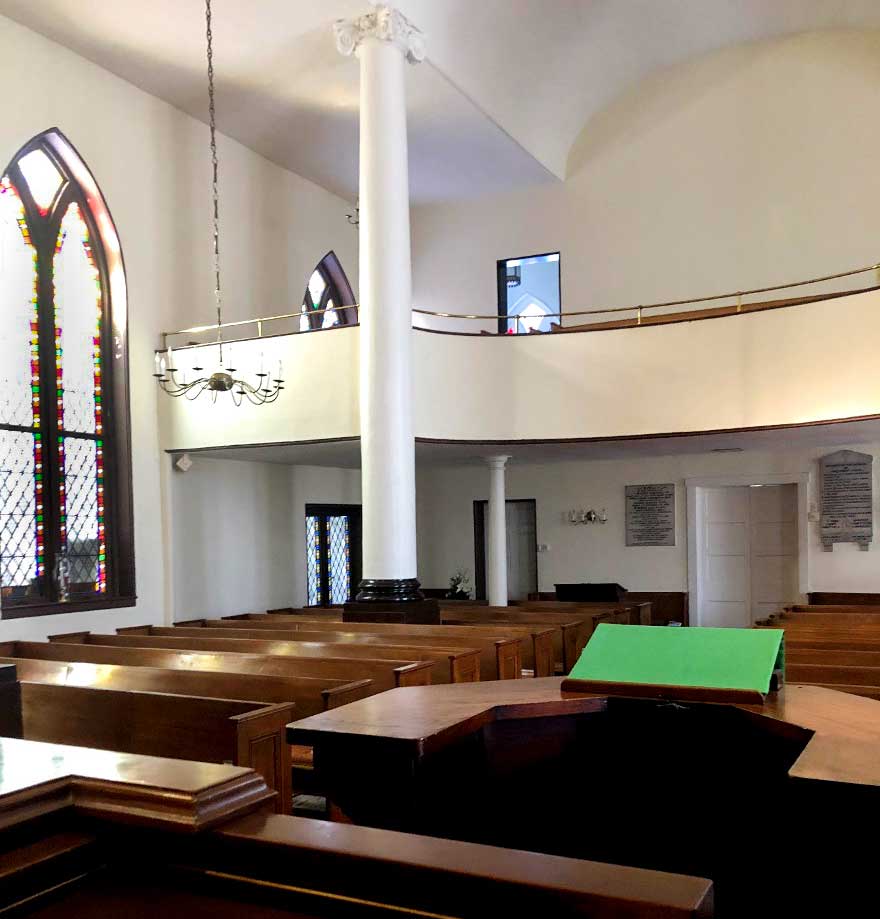
History of Worthington, Ohio
Prior to the settlers arriving, a group of men were sent ahead to clear the land and build shelters for the families coming from the East; so when the settlers arrived, they would have a place to live and place to worship.
There were 12 families coming to settle in the new area, so land was cleared and 12 homes/shacks were built around the village green. Along with those 12 buildings was the multipurpose building. This building served as the church, school and public library. This gave the settlers everything they needed upon their arrival.
This multipurpose building served as the church building from 1804-1831.
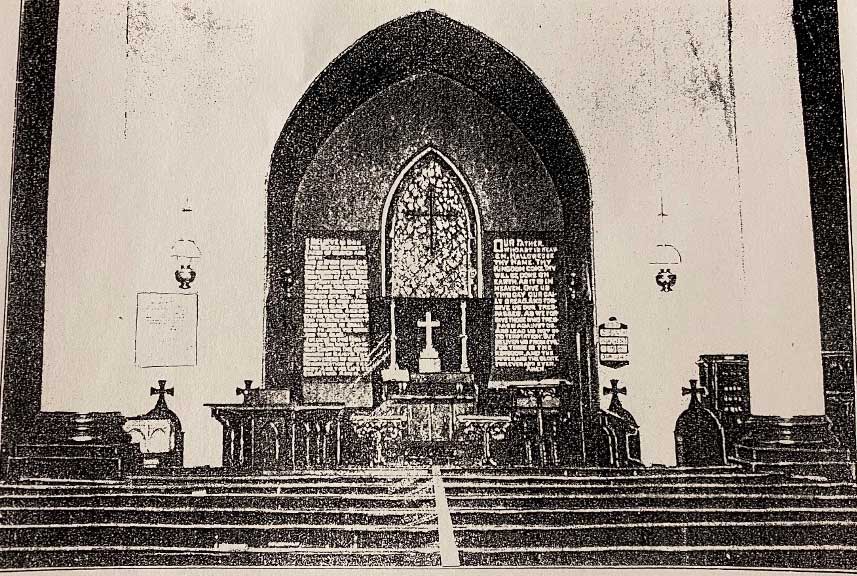
History of St John’s Episcopal Church
In 1817 Philander Chase moved from Connecticut to Worthington and became the first resident priest, allowing sacraments to be distributed regularly.
Chase was also the founder of Kenyon College. Chase chose not to establish Kenyon College in Worthington as he believed it was not a suitable place for the college as James Kilbourne also owned and ran a pub. Chase purchased land just south of town with his wife, Mary Chase, and ran a large farm.
Mary Chase was buried in the St Johns Graveyard. Her grave was built over during the 1917 extension of the sanctuary.
Construction of the current building
Construction on the current St John’s Episcopal Church building began in 1827 and was completed in 1831. The current building was built across the street from the previous structure and was built right on the Village Green of Worthington. The building was built entirely by the congregation of St John’s. The stone for the foundation was dragged from the Whetstone Rive (now the Olentangy River) and cut on site to fit the foundation.
The bricks were hand made from clay from the nearby river and fired on a local Worthington farm. The interior rich woods are all hand-hewn native woods (Black Walnut, Butternut and Cherry). The Four Pillars prominent in the Nave are milled solid Black Walnut tree trunks covered in plaster. These pillars are supported by large boulders in the cellar of the church.
When the current building was built, there was no central aisle and men sat on one side and the women on the other. The pews originally had doors on the ends to help keep the heat in in the winter. The same pews are in the church today but the doors have been removed.
At the time, the church could not afford stained glass so clear glass was placed in the window openings and stained glass was later added in approximately 1880. However, there was a small stained-glass window that that was above the altar on the east side of the building donated. It’s known as the Kilbourne window.
Also, at the time the building was built, there was no bell in the tower. The Bell was added and dedicated and rang for the first time on Christmas Eve 1833. A lovely moment in the history of Worthington, Ohio.
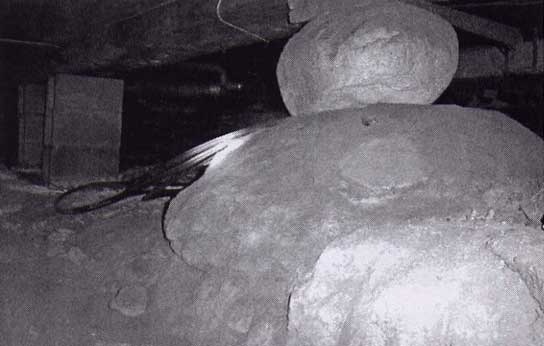
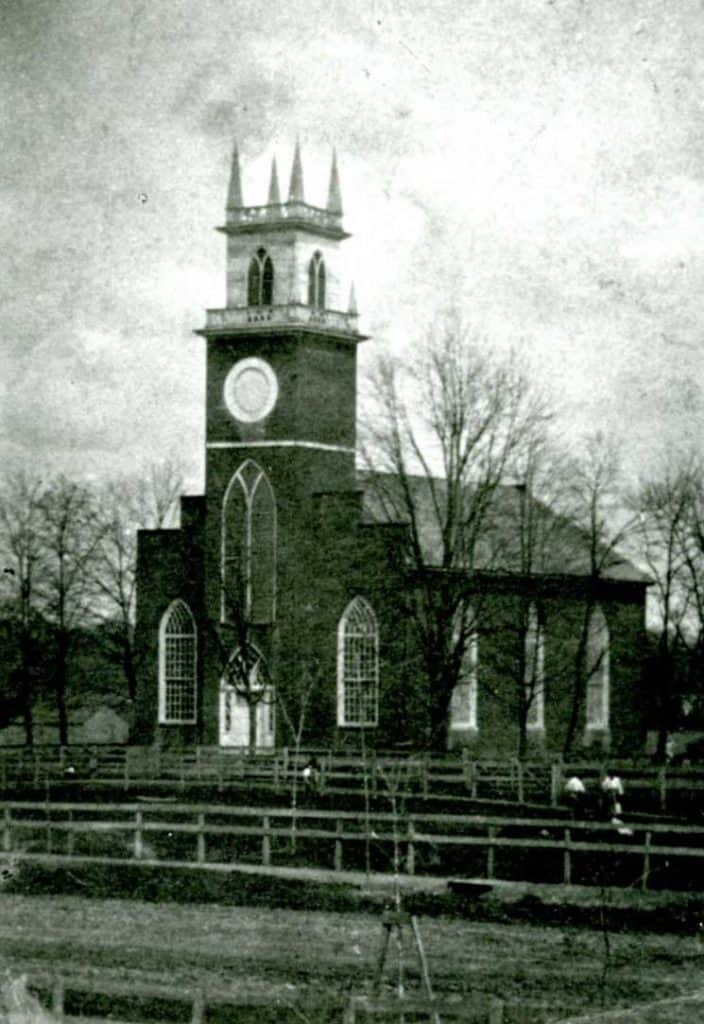
The rectory
In 1845, money had been raised to build a rectory. The home was built next to the church on the village green and built in the Greek Revival Style. Rectors were provided free housing by the church in this home. In 1924, the house was moved to 799 Hartford St and a new parish hall was built.
In 1978 the home was sold and moved a second time – this time to 50 West New England Avenue where it is home to the Worthington Historical Society and the Worthington History Museum.

More changes to St John’s Episcopal Church
In the 1880s some changes came to the current building. One of the first was the addition of a center aisle in the sanctuary to give more of a direct route to the front of the church. The pews were reconfigured and the doors were removed.
In 1885, during renovations, a tracker organ was installed in the front of the nave by the Barckhoff Organ Company. The original organ was located in the balcony.
The tracker organ had to be hand pumped by the youth of the church as there was no electricity in the building. The youth earned 50 cents a week for their efforts.
In 1968, the organ was altered and a Moller Artiste Organ was added to the Barckhoff organ. Our current organ, which occupies the same space, was built by the Schantz Organ Company in Ohio and was dedicated in 1984.
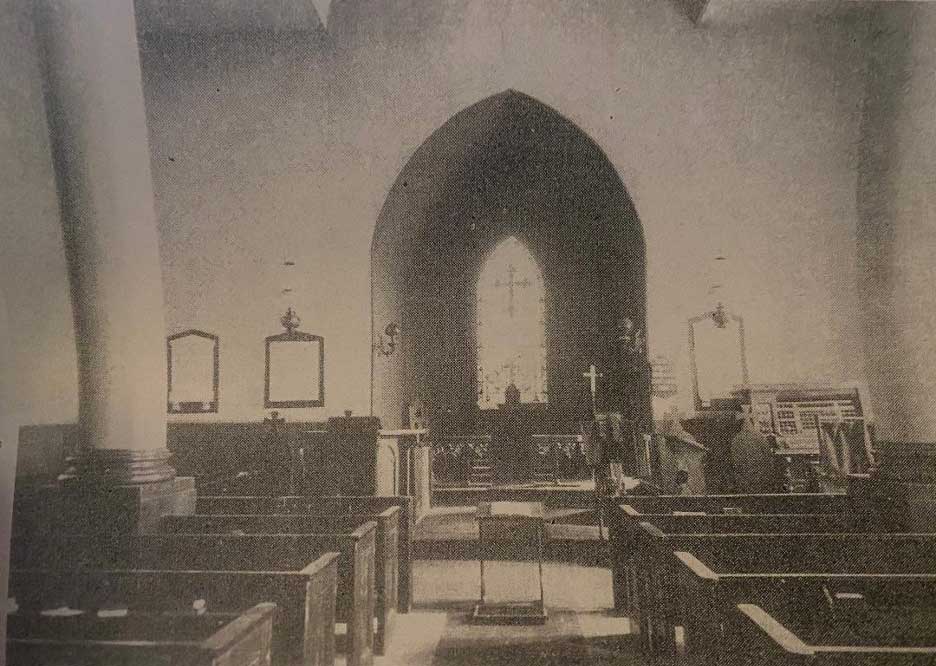
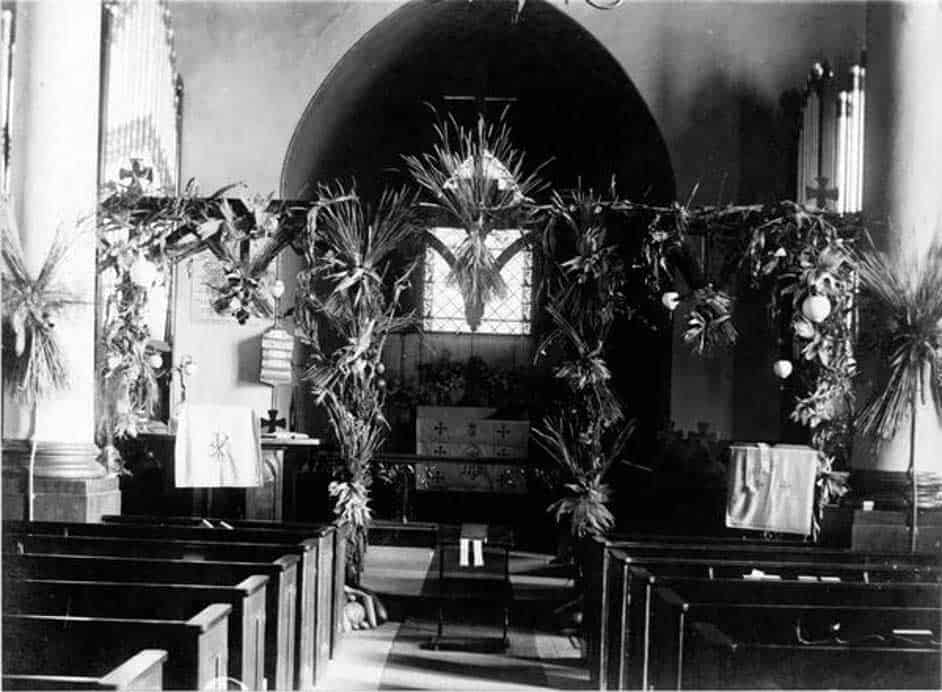
In 1917, the sanctuary was extended 25 feet to the east, creating a chapel and sacristy. A white marble altar replaced the original wood altar, which is now being used as a free-standing altar in the sanctuary. Also “The Reigning Christ” was added behind the white marble altar.
To the left of Christ is the Angel Gabriel and to the right of Christ is the Angel Michael. (See photo below.)
Central heating was added to the building as well. The Kilbourne stained glass window on the east side of the building behind the altar was removed at this time. The window was later found in the basement of a local Worthington building and has been framed and now hangs in the hall of the church and is back lit.
In 1927, the new parish hall, known as Kilbourne hall, was built on the site of the old rectory. The hall was built in a Tudor style popular in the late 1920’s. This building houses offices, an undercroft, kitchen, and hall/fellowship area.
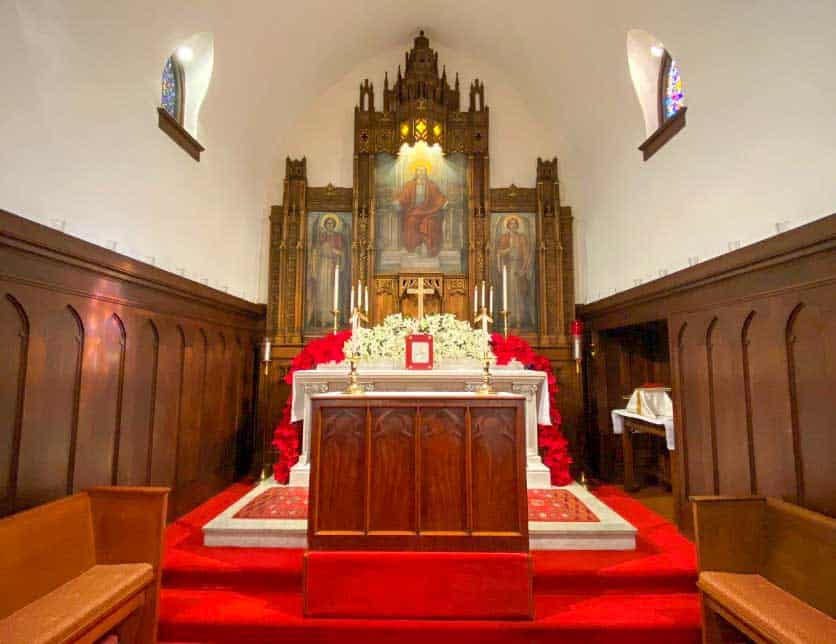


Lightning strikes St John’s Episcopal Church
In 1880, the original tower was replaced with a new spire, which was later nicknamed the Dunce Cap due to its shape and the look it gave the church. Funds to replace the spire were started immediately upon the completion of the spire because of its ungainly appearance.
In 1929, the 1880 spire was struck by lighting and destroyed by fire. Mrs. W.B. Dershler, the granddaughter of James Kilbourne and the benefactor to the Worthington Library, donated the remaining funds needed to replace the tower. The current tower was dedicated in 1931 and is a reconstruction of the original 1831 tower.
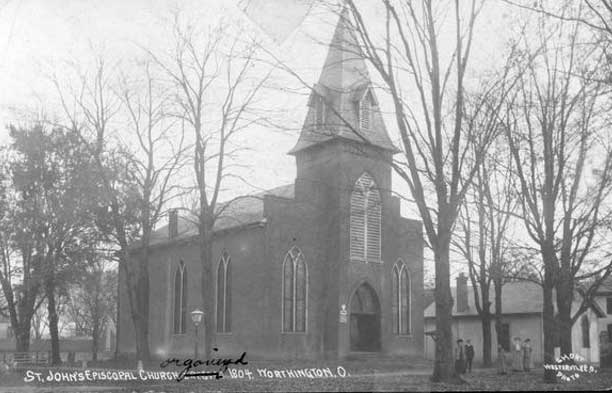
A growing church
Keeping in step with many Ohio churches, St John’s Episcopal Church continued to grow. An additional building was constructed in 1962 and an early childhood education wing was added. This building now houses the St John’s preschool.
In 1996, the last of the additions and changes were made. Offices and an atrium were added to the three existing buildings, connecting them all together. Now one could flow between the Nave, Kilbourne Hall, and the preschool without needing to go outside.
This also allowed Sunday worshipers to access restrooms without having to leave the building to go outside to the hall next door, and brides did not need to track through a muddy stone graveyard in their wedding dresses.
The graveyard behind the church began as community burial grounds. There are 317 documented burials dating from that of Captain Abner Pinny on 11/23/1804 to Charles Edward Burr 08/07/1882.
A columbarium wall was built in two phases. Phase one was completed in 1978 and phase two in 1998. No in-ground burials take place, but columbarium burials are still allowed.
St John’s Episcopal Church is placed on the National Registry of Historic Places
In April of 1980, the church, Township Hall, and graveyard were placed on the National Registry of Historic places. It is an important part of the history of Worthington, Ohio.
St John’s Campus is now comprised of the church building, Kilbourne Hall, the early childhood building, the Carriage House, Township Hall, and the graveyard. The church still sits on the village green and is a very active congregation,
St John’s Episcopal Church is part of the Diocese of Southern Ohio and welcomes all who enter her doors.
You can find St John’s online through their website, Facebook, and YouTube channel.
Meet the author
Louis Huffman

Louis F. Huffman was born and raised in Toledo, Ohio, and raised in a Congregational Church in the Old West End of Toledo, one of the country’s largest historic neighborhoods. He moved to Columbus, Ohio, in fall of 2012 and married his husband in December of 2014.
Louis started attending St. John’s in 2017 and immediately fell in love with the community. Louis is the chairman of the communications committee at St. Johns.
He currently lives in Columbus, Ohio, with his husband, Eric, and their three pets – a small poodle named Fife, a standard poodle named Edith, and a tortoiseshell cat named Kiya.
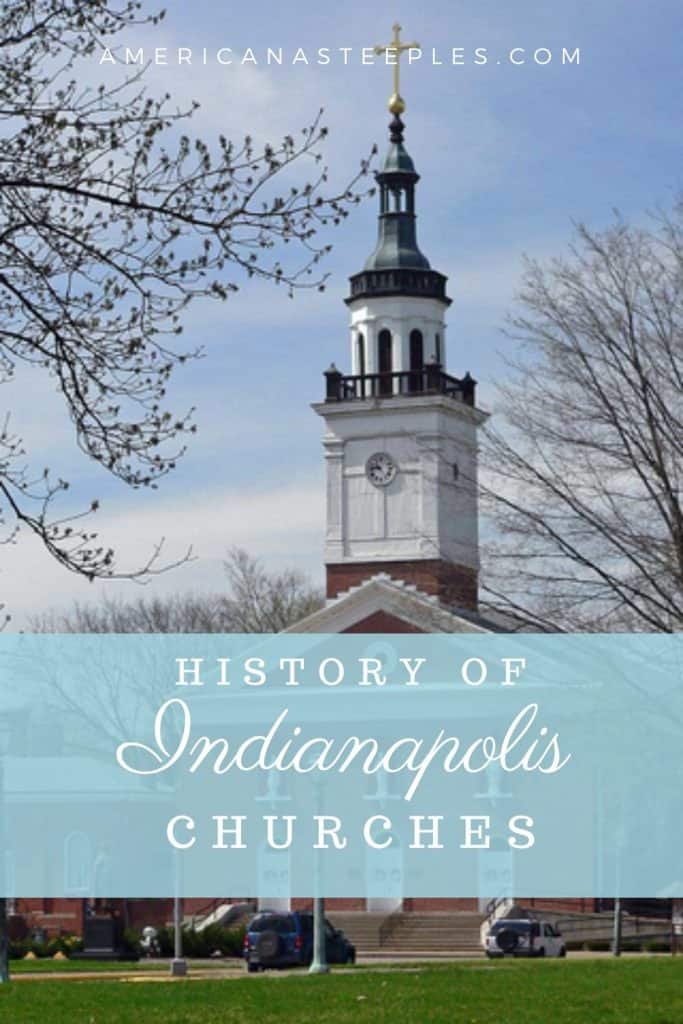



Teresa Trumbly Lamsam, Ph.D., is an accomplished Social Scientist and Journalist. Passionate about establishing credibility in the digital realm, she champions transparent and trustworthy online content. She is dedicated to producing content that sparks curiosity and nourishes the heart and mind.


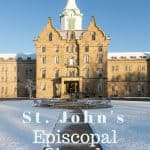
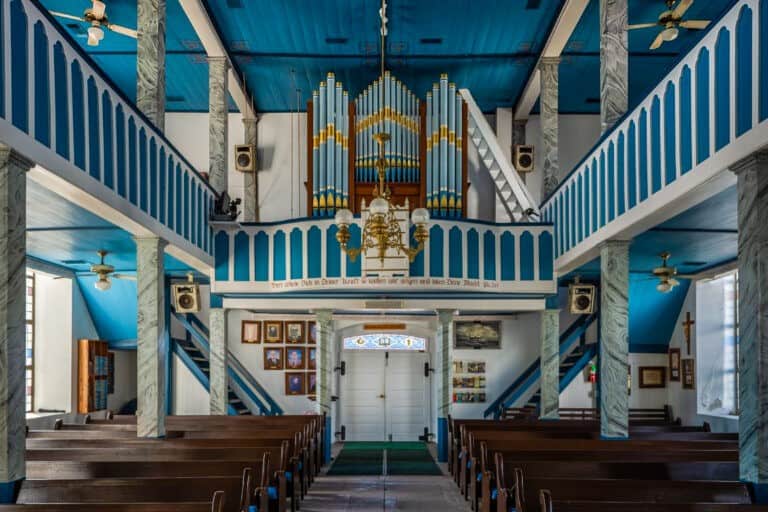

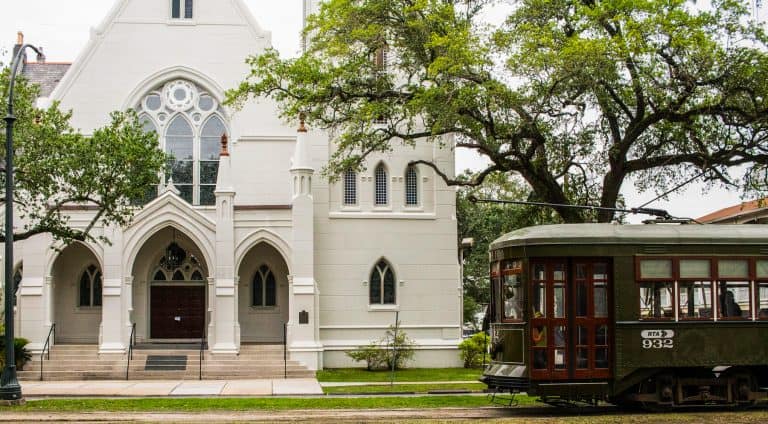

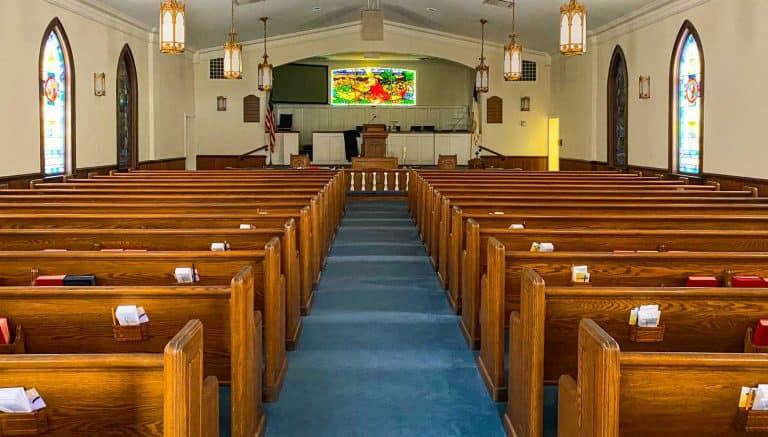
This is so interesting to know more about this church. I like historical places and knowing more about their construction and origins is very fascinating.
What a great and detailed post about St John’s Episcopal Church. You can find a lot of history behind the church especially when they are so old!
I love the history behind this and seeing the photo from 1831 was pretty neat.
What an interesting post! Thank you for sharing!
Very interesting history! My brother lives in the area and I’m originally from Ohio, so especially interesting to me 🙂
What a lovely initiative to research, document and publish details on a historically significant building for Worthington, Ohio. Putting this online makes it accessible to a new generation that sources their information this way and it’s so interesting to read how this all came about in the early days. The way you have managed to obtain and use old photos also gives a great appreciation of the history here.
I love learning the history of different places. Thanks for sharing all this information about St. John’s Episcopal Church.
Very interesting. I love the old photos you shared. Really helps imagine what it use to look like. I always like the history behind these old churches.
Thanks for introducing this church! I love the historical places when traveling
When I book a trip, the first thing I google is St John 🙂
I love understanding the history behind architecture and buildings. Thank you for the history on St John’s Episcopal Church – it was a really interesting read.
wow 1831!! that is a very old church indeed , i really enjoyed reading about the history and thanks to you a know a bit moe about it
My oh my….I haven’t read so much history about one particular church like I have read here. I want to be a part of it.
Beautiful church. Thanks for sharing the history of this church.
What a beautiful history of the church! I was looking for the wrought iron candle holders in all of the pictures, lol. I hope they are on display somewhere in the church!
I’m with you, Marie. I hope those are still around!
we still have them they are not out at this time as they are shorter, and we use candles that use oil and the original ones use real candles. we still have them and show them off for tours.
Wow I love this so much beautiful history here and such a lovely church and very historic too x
i’m so glad this church and its graveyard were put in the national registry so money and hard work can be put into keeping it in good shape.
St John’s Episcopal Church seems like a historic place. I hope to visit it soon. So nice! Love the arhictecture!
Wow! It’s beautiful to capture all of the history around this beautiful structure! Well written and love all the details that took me back in time.
It’s wonderful to learn the history behind buildings. Ohio does have some beautiful buildings, including some of their churches.
Always love a place with history and loved looking at the B&W images of the church.
It was really such a wonder read about St.John’s Episcopal Church and it’s history. The church now looks so vibrant and lively. I have always admired visiting churches more because of the long history associated with them and how they came into existence.Would feature in my plans whenever I visit Wellington.
Wow. So much history behind this church. It is neat to see how it has changed throughout the years.
Thank you for writing about the rich history of the church in Ohio.
Love the history and pictures in this story. If I make it to this part of Ohio, I would love to visit the church!
A thorough research on the history of St John’s Episcopal Church (Worthington, Ohio). It underwent a lot of changes!
Wow what an old church- 1831. It was interesting reading about the history of St.John’s Church in Ohio.
I love history and historical sites, especially those founded by people of faith. Thank you for sharing this beautiful church and its history!
This is great. My middle daughter and I really enjoy visiting and learning about old churches. Thank you for sharing.
This is a great history of St John’s Episcopal which was the Church I grew up and was a Acolyte in!
It’s interesting to note that most of the churches established during the 1800s included a cemetery for the congregants. Perhaps it’s because in those times the churches were more community-based. Thanks for sharing the history of St. John’s Episcopal Church.
This was so informative! Thank you for all the time, energy, and research it must have take to pull all this knowledge together into one post!
Thank you for all the wonderful information on this church. I love finding history in different places.
I feel like I know this church based on how well you described it and shared it’s history.
So fascinating to consider the pioneers first service right after their arrival. That intentionality carried throughout every step in making ast John’s what it is today!
What a lovely building! I’m glad the building’s belltower has been returned to its original look– “dunce cap” was an apt name for the spire that replaced the original tower!
great someone takes the time to record church history and show so many photos